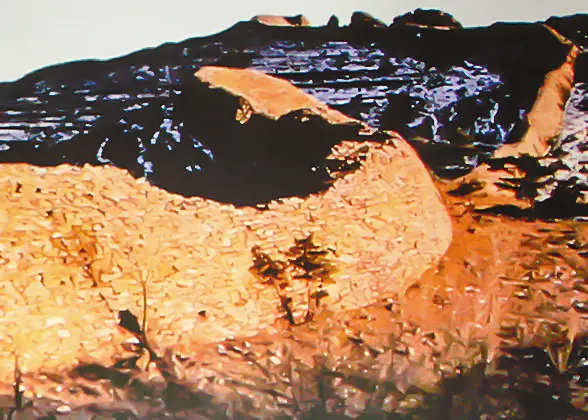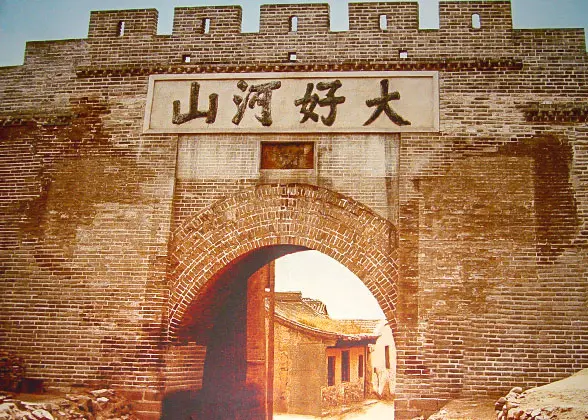Great Wall in Zhangjiakou City
 |
| Great Wall of Ming Dynasty in Zhangjiakou, Hebei |
The Great Wall is a grand military defense line in ancient times, whose construction work had been implemented in many dynasties. Due to the strategic location, nearly all of the dynasties took Zhangjiakou, Heibei Province as a vital military stronghold and built Great Wall there, measuring 1,804 km (1,121 miles) in total and occupying two thirds of the whole length in Hebei Province.
A 'Museum' of Great Wall
Great Wall in Zhangjiakou City was constructed in over eight dynasties from the Warring States Period (476 BC-221 BC) to the Ming Dynasty (1368-1644), traversing nearly a 2,000-year time span. The constructional style also varies. Besides the conventional brick laid wall, segments piled of rammed earth and stones are also very common. The top of the wall comes in different shapes, such as round, flat, spire and inclined. Some sections can allow eight people standing shoulder by shoulder, whilst others allow four horses to stand neck to neck. However, there are still some points that are so narrow that it can only allow one person to get through.
Why Zhangjiakou Became the 'Great Wall Museum'?
Located in the transitional belt of Mongolian Plateau and North China Plain, this city connects the offshoot of Yinshan Mountain in the west, Yanshan Mountain in the east, and is bordered by the northern end of Taihang Mountain in the south. It was a natural boundary between the ancient prairie nomads in North China and the farmers of the Central Plains. The basin in the middle, formed by Sanggan River and Yanghe River, was suitable for large infantry unit to be stationed and moved about. It was this reason that the emperors of many dynasties actively built Great Wall here, making it a huge outdoor museum as time passed by.
Zhangjiakou Great Wall Firsts and Facts
![]() The highest point of the Great Wall is located in this city, which stretches from Huapinling Mountain to Bingshanliang Mountain, measuring over 2,000 meters (6,562 feet) in height.
The highest point of the Great Wall is located in this city, which stretches from Huapinling Mountain to Bingshanliang Mountain, measuring over 2,000 meters (6,562 feet) in height.
![]() This city has the most fortresses, which built during the Ming Dynasty alone added up to 69.
This city has the most fortresses, which built during the Ming Dynasty alone added up to 69.
![]() The most ancient courier stations were constructed here, which added up to 22.
The most ancient courier stations were constructed here, which added up to 22.
![]() The border trade outside the Zhangjiakou Great Wall was most active, making it one of the busiest cities from the Han Dynasty (202 BC - 220 AD) to the Ming Dynasty.
The border trade outside the Zhangjiakou Great Wall was most active, making it one of the busiest cities from the Han Dynasty (202 BC - 220 AD) to the Ming Dynasty.
![]() Tang Dynasty (618 – 907) was considered one of a few dynasties that didn't build the Great Wall. However, sections in Chicheng County were proved to be constructed during that time, refuting that previous opinion.
Tang Dynasty (618 – 907) was considered one of a few dynasties that didn't build the Great Wall. However, sections in Chicheng County were proved to be constructed during that time, refuting that previous opinion.
![]() From the Qin Dynasty (221 – 207 BC) onwards, if the emperors decided to set out a personal expedition to the northern frontier, Zhangjiakou was the access they must take.
From the Qin Dynasty (221 – 207 BC) onwards, if the emperors decided to set out a personal expedition to the northern frontier, Zhangjiakou was the access they must take.
 |
| Dajing Gate |
Dajingmen, also known as Dajing Gate, is the most famous and best-preserved section of all in the city. Standing at the northern end of the city, it used to be an important pass and presently is a landmark of the city. During peace time, it also witnessed the trade between Han people and the northern nomadic tribes.
Damages Brought by Nature and Human
The Great Wall is not like other historical relics that can be well kept indoors. It is exposed to the nature, enduring the winds and rains for hundreds of years, which makes protection work very difficult. About 156 kilometers (97 miles) of the sections in Zhangjiakou City have gone forever and even longer are shabby and broken. A part of the Dajingmen section was collapsed in 2012 due to the continuous heavy rains. This well developed scenic spot is not immune to the natural environment, let alone sections in the remote areas.
On the other hand, people living near the sections have not raised enough awareness of protection. Some even shovel bricks from the historical relic to build their own houses or sheepfold. At the boundary between Zhangbei County and Wanquan County, the 1,000-meter (1,100-yard) section built in the Ming Dynasty can barely be found. The bricks of the battlements, even the foundation rocks beneath the ground, have been taken away.
The Great Wall Protection
The severe destruction raises the attention of the government and some local residents. They have made their moves to protect this historical relic. The government established the Great Wall Protection Administration in 2012, to take charge of its management. Some protection planning has been enacted to reinforce the supervision and improve the present situation. Some villagers volunteer to be the safeguard of this old construction, patrolling and monitoring people's behavior.
Although some achievements have been made, the situation is still not very optimistic. Lack of budget and manpower, some sections still can't get a timely repair. To well protect this precious relic, more efforts from both government and citizens should be put into the protection work.